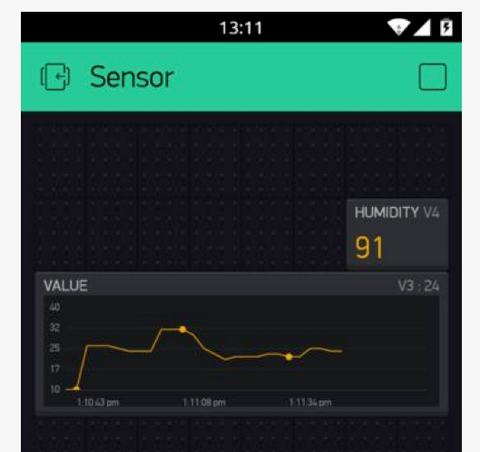One of the newer cloud-based Internet-of-Things platforms - blynk.cc - offers a simple way to use two-way communication between a smartphone and an Internet-enabled single board computer or micrcontroller.
A neat example of this in action has been created by Instructables member vshymanskyy who shows us how to monitor the data from a DHT22 temperature and humidity sensor using blynk and a Raspberry Pi.
After installing the appropriate libraries and Javascript on the Pi, it's a simple matter to setup the smartphone interface for the sensor - which is done right inside the app. And in a few moments you can then connect to the Raspberry Pi and receive the data back into your phone in basically real-time, for example:

The blynk system is easy to use and works on may platforms (for example, Arduino). However to learn more about this implementation, check out the project page. And for more, we're on facebook, twitter and Google+, so follow us for news and product updates as well.
If you're looking for a sensor to measure temperature and humidity - check out our HUMID: humidity and temperature sensor module. Designed around the DHT22 sensor, it only requires one digital pin and power - and is easy to use with out Quick Start guide. With a temperature range of -4°C to +125°C with +/-0.5°C accuracy, and humidity at 0-100% with 2-5% accuracy you're ready to measure. For more information and to order, click here.




















